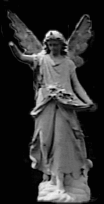The Inspired Traditionalist
This web site has been created to encourage and support other Catholic Traditionalists.
"Ignorance is no excuse when we have neglected to learn what we are obliged to know."
St. Ambrose
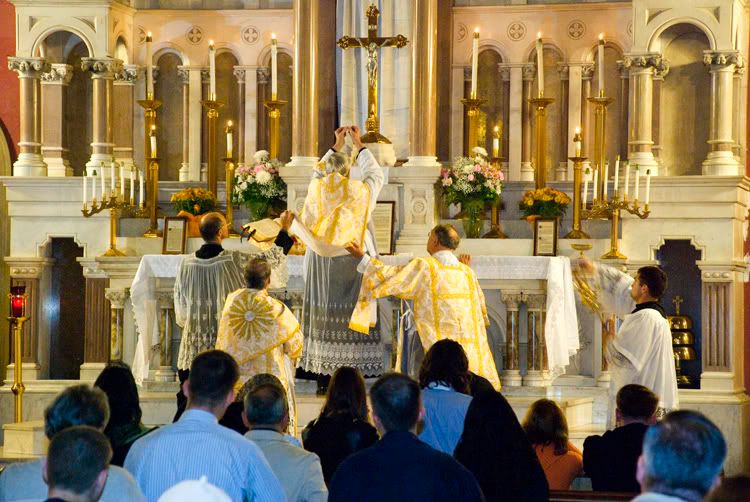 SACRED HEART CHURCH NEW HAVEN, CONNECTICUT
SACRED HEART CHURCH NEW HAVEN, CONNECTICUT
Saturday, December 30, 2006
Monday, December 25, 2006
Saturday, December 23, 2006
Even More Christmas Traditions
 Christmas wreaths
Christmas wreathsA circle symbolizes continuance - it never ends. It also reminds us of the never ending love of God. Christmas wreaths are traditionally circles made with evergreens, which symbolize life. They are often decorated with other natural plant parts, such as pine cones and holly berries.
As the Christmas wreath tradition has become more commercialized, all kinds of decorated wreaths can be found, some with no evergreens in them at all.
C
 hrismons
hrismonsChrismon,
(Medieval Latin, from Latin Christus + Late Latin monogramma.) Christ Monogram. A type of Christmas Tree decoration used in many churches and often in the homes of Christians.
The symbols used in the decorations represent Christ, Christianity, or a variety of biblical and theological concepts. Crowns, crosses, doves, butterflies and stars are a few examples of a Chrismon design. If the ornaments on a Christmas tree are comprised mostly of such Christian symbols, the tree is known as a "Chrismon Tree." Most Chrismons are white with gold decorations of beads, ribbon, glitter, etc. White is the liturgical color for Christmas and suggests purity and joy. Gold is a color for kings and represents the glory and majesty of God.
The symbols themselves date back to the early Christian church. Early Christians were not very good artists. In fact, they were afraid to allow any kind of art that could possibly encourage anyone to worship "graven images" of any kind. But as the church grew, leaders found that art was needed to help give it a sense of identity. Also, art helped people who couldn't read or write to understand certain Christian ideas and principles.
T
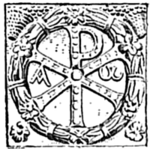 hroughout all the controversy surrounding the use of art in the church, symbols seemed to be somehow different from "art", so they were accepted.
hroughout all the controversy surrounding the use of art in the church, symbols seemed to be somehow different from "art", so they were accepted.Mrs. Frances Spencer, a member of the Ascension Lutheran Church in Danville, Virginia, began making her own Christmas tree decorations and eventually became a professional tree decorator. In 1957 she was asked to decorate the tree at her church. Wanting to make the tree decorations special in order to reflect the tradition of her faith, she began to use these early Christian symbols. Thus the "Chrismon Tree" was born.
Since 1957, her ideas have been published in several books (she assigned the copyrights to the name "Chrismon" to her church). One stipulation is that Chrismons may never be sold for profit, which explains why you don't find Chrismons in stores. Patterns for making Chrismons are for sale, though.
Friday, December 22, 2006
Christmas Traditions Continued

Christmas Eve
Christians may derive the Christmas Eve tradition from Jewish holidays, which extend from sundown to sundown. Christmas Eve services are often a Candlelight Service, when at some time the only lighting is provided by candles placed around the sanctuary and ones held by worshippers. The service often includes a retelling of the Christmas Story and singing of several favorite Christmas hymns. Some churches hold a midnight service -- one that ends at midnight as the day celebrating Christ's birth is ushered in.
Many families have Christmas Eve traditions too. Some have a complete ritual that is followed lights turned off except for Christmas tree lights, eating certain foods, opening of one gift, and so on.

Christmas Rose
The Rose of Sharon is the common name for one of two unrelated plants. One plant is Aaron's beard, or goldflower (Saint-John's-Wort). The other is the althaea. But the biblical rose of Sharon, made famous in the Song of Solomon, has actually not been identified. Some botanists think it's a species of narcissus; others think it's the autumn crocus.

Christmas stockings
According to an old tradition, three poor girls who needed the money for their wedding dowries had hung their stockings by the fire to dry. The original Saint Nicholas found out their need and left his very first gifts of gold coins in their stockings.
For a long time, it was traditional to receive small items like fruit, nuts and candy in your stocking. But since the 1950s, many homes have seen more expensive gifts replacing the simple ones.
The tradition of a lump of coal in the stockings of naughty children comes from Italy.

Christmas trees
At a time of the year when the leaves of other types of trees have browned and fallen off, evergreens keep their fresh, green look. They are a symbol for life.
Dr. Martin Luther was one of the first to use the Christmas tree as a home decoration. Tradition holds that while on a walk one Christmas Eve, Dr. Luther noticed an evergreen tree shining in the moonlight. He couldn't forget this beautiful picture. He returned home with an evergreen tree and decorated it with candles. Luther told his children that the tree should remind them of the brightness of Christmas and its message of the Savior's birth.
By the beginning of the 19th century, all of Germany had adopted the use of the green "Christmas" tree. They added stars, sweetmeats, tiny toys, and gilded nuts together with candles on the trees.
The custom spread to England in the 19th century during the reign of Queen Victoria, who was married to the German Prince Albert. He wanted to have his children enjoy one of his childhood memories. The custom of a Christmas Tree soon spread throughout Europe and was brought to the United States by Pennsylvania Germans in the 1820's. Queen Victoria had a Christmas Tree placed in Windsor Castle in 1841.
Dr. Henry Schwan introduced the custom of a lighted Christmas tree in church, in Zion Lutheran Church in Cleveland Ohio, Christmas Eve 1851.
In Germany and in ancient northern cultures, after the December festivities, the branches were removed and the trunk was decorated on May 1st as a May Pole, celebrating a rebirth of spring. The tree was then cut up and the largest log was used the next December as the Yule Log..
Christmas tree ornaments
The Star. Christ is the star that all wise people follow, as did wise men of old.
For ancient people, a five-pointed star at the top of a tree symbolized the pentagram -- the so-called "star of mankind". But for Christians, a five pointed star represents the star followed by the Magi.
An eight pointed star is a symbol of the world Christ came to save.
The six pointed star, called the Creator's star, represents the six days of creation. Often r
 ecognized as the Jewish "Star of David", it also reminds us of Jesus' ancestor, King David.
ecognized as the Jewish "Star of David", it also reminds us of Jesus' ancestor, King David.Ornaments.
The common Christmas season colors of red and green originated with the red apples that once hung on the green Paradeisbaum, or Paradise Tree, which was part of 14th century religious pageantry. Most decorations we hang on trees today have a long history and once had very specific religious associations.
Gilded nuts and gingerbread cookies were hidden in the tree. Marzipan candies, shaped like fruits and vegetables, were hung from the boughs. Brightly decorated eggshells, cut in half and filled with tiny candies, were set in the tree like bird nests. So many sweets were hung from the tree that some people called it "the sugar tree". On the Twelfth Night of Christmas, January 5th, when it was believed that the Magi arrived in Bethlehem bearing gifts, the tree was shaken and the children finally were allowed to eat the sweets that fell from the tree.
The wafers once hung on the Paradise tree were replaced with cookies in the form of hearts, bells, angels and stars. With time, maybe because many decorations were eaten before the tree was taken down, decorations made out of thin, painted metal replaced the cookies.
The type of Christmas tree decorations we use today started when families in colder climates combined the decorations of the Paradise Tree with the candles that were used on conifer trees. Even today some people decorate the Christmas tree with strings of popcorn or hang cookies on some branches.
In 1880, Woolworth's department store was first to put manufactured Christmas tree ornaments on sale. They were immediately popular.
Lights. Martin Luther, in the 16th century, is credited as being the first person to put candles on a tree. The first electrically lighted Christmas tree appeared in 1882.
Albert Sadacca was only fifteen, when in 1917 a tragic fire in New York City involving Christmas tree candles inspired him to invent electric Christmas lights. The Sadacca family sold ornamental novelty items including novelty lights. Albert adapted some of the products into safe electric lights for Christmas trees. The first year only one hundred strings of white lights sold. The second year Sadacca used brightly colored bulbs and a booming multi-million-dollar business was born.
In 1923 Calvin Coolidge held the first lighting of an outdoor Christmas tree at the White House, thereby starting a long tradition.
Thursday, December 21, 2006
More Christmas Traditions

Candy Canes
The candy cane is a symbol of the humble roots of Christianity, the shepherd's crook. Legend has it that in 1670, the choirmaster at the Cologne Cathedral in Massachusetts handed out plain white sugar sticks among his young singers to keep them quiet during the long Living Crèche ceremony. In honor of the occasion, he had the candies bent into shepherds' crooks. Since then, more Christian symbolism has been attributed to these Christmas candies.
The hardness of the candy cane reminds Christians that the church was founded on solid rock.
The traditional peppermint flavor of the cane is tastes like hyssop, a plant in the mint family. It was used in the Old Testament for purification and sacrifice.
Records show that some people gave candy canes to children who learned their prayers. The shape of the candy cane, like a 'J', signifies Jesus.
In 1847, a German-Swedish immigrant named August Imgard of Wooster, Ohio, decorated a small blue spruce with paper ornaments and candy canes.
It was not until the 1920's that the candy cane's more recognizable striping was added. It is in this regard that Georgian Bob McCormick, from Albany, even has a place in candy cane history. Bob McCormick ran a small confectioners in Albany, GA, and started by hand-twisting the colors into the candy canes. In the 1950s, Bob’s brother-in-law Gregory Keller, a Catholic priest, invented a machine to automate candy cane production. "Bob's Candies" is now a very common commercial brand of candy cane.
In the now traditional candy cane, Christians have found ways to remind themselves of the true focus of Christmas -- Christ. We are reminded of Christ's blood and His purity by red and white stripes. You may have noticed the different size of the red stripes. The wider red stripe reminds us of the blood that Jesus shed on the cross. The stripes and wounds that he received are symbolized by the smaller red stripes. The white stripes represent Christ's sinless purity. The three stripes together represent the Holy Trinity
Wednesday, December 20, 2006
Christmas Traditions

Christmas carols
The word "caroling" dates back to ancient Greece and the word choraulien, meaning "to dance to a flute." During the Middle Ages, carols were English and French dances accompanied by singing. In the French Midi, for example, the "carol" was a kind of round dance. Over time, the word "carol" has changed its meaning, and now refers only to certain kinds of songs.
The Anglo-Saxon tradition was to assemble small choirs on the village lawn to sing carols and Christmas songs for the pleasure of passers-by. A number of popular American Christmas carols came from France and England.
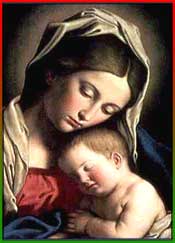
Christmas cards
Christmas cards are a Victorian creation that began in London, England, in 1843 and was helped along by the development of the public "Penny Post" and the speed with which the new railroads could deliver mail. They started out as a kind of stationery.
Sir Henry Cole, a British Postal Service worker, together with an artist he hired named John Horsley, created the first card. This early card showed a Christmas scene framed in three panels. The center panel was a home table scene -- children, parents and grandparents seated, with some raising their glasses for a toast. The side panels depicted acts of Christmas charity -- to the left, feeding the hungry; to the right, clothing the naked. Underneath was the now familiar phrase "A Merry Christmas and a Happy New Year to You."
At first the cards were almost exclusively religious, but they slowly branched out to include humor and non-religious sentiments.
In Germany, manufactured Christmas cards flourished in the 1860s. The earliest known Christmas card posted in Finland dates from 1871.
Christmas cards started in America just three years after being introduced in Britain -- 1846. But they made their real breakthrough in the 1920s. Advances in printing techniques added to the popularity of Christmas cards. This was also the time when red became the color most associated with Christmas.
Tuesday, December 19, 2006
Christmas Trivia Fun
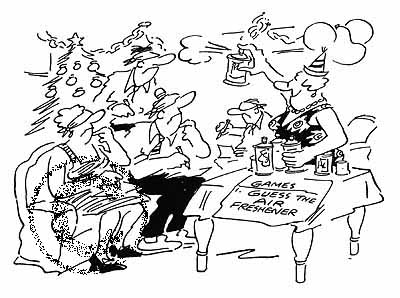
I came across this link that may be fun. I know I enjoyed checking it out and learning a few new things
Such as:
Who produced the first Christmas Card?
Who sent the first Christmas Card?
Who started the custom of kissing under the mistletoe?
And many more
here.
Monday, December 18, 2006
Sacred Heart and The St. Gregory Society
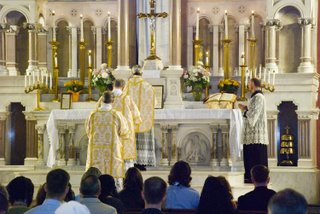
Sacred Heart Church in New Haven, Connecticut just recently celebrated their 20th Anniversary Mass. This is where I attend Mass regularly. I wanted to share some of the photos taken by Douglas Turecek
View photos
There is also a sampling of the sound recording
Missa In Te Domine Speravi Gloria
Sunday, December 17, 2006
Gaudette Sunday
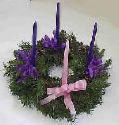
Old Calendar: Third Sunday of Advent
"Rejoice: the Lord is nigh." As Christmas draws near, the Church emphasizes the joy which should be in our hearts over all that the birth of our Savior means for us. The great joy of Christians is to see the day drawing nigh when the Lord will come again in His glory to lead them into His kingdom. The oft-repeated Veni ("Come") of Advent is an echo not only of the prophets but also of the conclusion of the Apocalypse of St. John: "Come, Lord Jesus," the last words of the New Testament.
Today is known as Gaudete Sunday. The term Gaudete refers to the first word of the Entrance Antiphon, "Rejoice". Rose vestments are worn to emphasize our joy that Christmas is near, and we also light the rose candle on our Advent wreath.
December 17 marks the beginning of the O Antiphons, the seven jewels of our liturgy, dating back to the fourth century, one for each day until Christmas Eve. These antiphons address Christ with seven magnificent Messianic titles, based on the Old Testament prophecies and types of Christ. The Church recalls the variety of the ills of man before the coming of the Redeemer.
Friday, December 08, 2006
The Feast of The Immaculate Conception
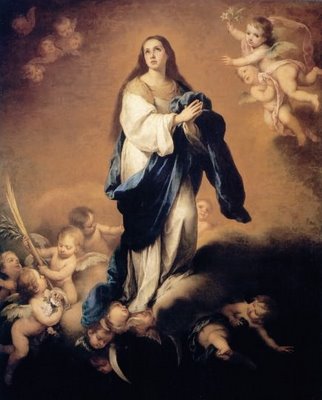
What would our World be like without Mary's Fiat?
Thank You Blessed Virgin Mary for saying "Yes"
Readings for the Feast of the Immaculate Conception
AntiphonI
Exult for joy in the Lord, my soul rejoices in my God; for he has clothed me in the garment of salvation and robed me in the cloak of justice, like a bride adorned with her jewels. (Isaiah 1:10)
Collect
Father You prepared the Virgin Maryto be the worthy Mother of Your Son.You let her share beforehandin the salvation Christ would bring by His death,and kept her sinless from the first moment of her conception.Help us by her prayers to live in Your presence without sin. We ask this through our Lord Jesus Christ, Your Son,Who lives and reigns with You and the Holy Spirit, one God, for ever and ever. +Amen.
Scripture
First Reading - Genesis 3: 9-15, 20
After Adam had eaten of the tree the Lord God called to him, "Where are you?" He asked. "I heard the sound of You in the garden," he replied. "I was afraid because I was naked, so I hid." "Who told you that you were naked?" He asked. "Have you been eating of the tree I forbade you to eat?" The man replied, "It was the woman You put with me; she gave me the fruit, and I ate it." Then the Lord God asked the woman, "What is this you have done?" The woman replied, "The serpent tempted me and I ate."Then the Lord God said to the serpent, "Because you have done this, Be accursed beyond all cattle, and wild beasts. You shall crawl on your belly and eat dust every day of your life. I will make you enemies of each other: you and the woman, your offspring and her offspring. It will crush your head and you will strike its heel."The man named his wife 'Eve' because she was the mother of all those who live.
Second Reading - Ephesians 1: 3-6,11-12
Blessed be God the Father of our Lord Jesus Christ, who has blessed us with all the spiritual blessings of heaven in Christ. Before the world was made, He chose us, chose us in Christ, to be holy and spotless, and to live through love in His presence, determining that we should become His adopted sons, through Jesus Christ for His own kind purposes, to make us praise the glory of His grace, His free gift to us in the Beloved. And it is in Him that we were claimed as God's own, chosen from the beginning, under the predetermined plan of the One who guides all things as He decides by His own will; chosen to be, for His greater glory, the people who would put their hopes in Christ before He came.
Gospel: Luke 1:26-38
In the sixth month the angel Gabriel was sent from God to a city of Galilee named Nazareth, to a virgin betrothed to a man whose name was Joseph, of the house of David; and the virgin's name was Mary. And he came to her and said, "Hail, full of grace, the Lord is with you!" But she was greatly troubled at the saying, and considered in her mind what sort of greeting this might be. And the angel said to her, "Do not be afraid, Mary, for you have found favor with God. And behold, you will conceive in your womb and bear a Son, and you shall call His name Jesus. He will be great, and will be called the Son of the Most High; and the Lord God will give to Him the throne of His father David; and He will reign over the house of Jacob for ever; and of His kingdom there will be no end.
And Mary said to the angel, "How can this be, since I have no husband?"
And the angel said to her, "The Holy Spirit will come upon you, and the power of the Most High will overshadow you; therefore the Child to be born will be called holy, the Son of God. And behold, your kinswoman Elizabeth in her old age has also conceived a son; and this is the sixth month with her who was called barren, for with God nothing will be impossible." And Mary said, "Behold, I am the handmaid of the Lord; let it be to me according to your word." And the angel departed from her.
Thursday, December 07, 2006
Wednesday, December 06, 2006
St Nicholas

The true story of Santa Claus begins with Nicholas, who was born during the third century in the village of Patara. At the time the area was Greek and is now on the southern coast of Turkey. His wealthy parents, who raised him to be a devout Christian, died in an epidemic while Nicholas was still young. Obeying Jesus' words to "sell what you own and give the money to the poor," Nicholas used his whole inheritance to assist the needy, the sick, and the suffering. He dedicated his life to serving God and was made Bisop of Myra while still a young man. Bishop Nicholas became known throughout the land for his generosity to the those in need, his love for children, and his concern for sailors and ships.
Under the Roman Emperor Diocletian, who ruthlessly persecuted Christians, Bishop Nicholas suffered for his faith, was exiled and imprisoned. The prisons were so full of bishops, priests, and deacons, there was no room for the real criminals—murderers, thieves and robbers. After his release, Nicholas attended the Council of Nicaea in AD 325. He died December 6, AD 343 in Myra and was buried in his cathedral church, where a unique relic, called manna, formed in his grave. This liquid substance, said to have healing powers, fostered the growth of devotion to Nicholas. The anniversary of his death became a day of celebration, St. Nicholas Day.
Through the centuries many stories and legends have been told of St. Nicholas' life and deeds. These accounts help us understand his extraordinary character and why he is so beloved and revered as protector and helper of those in need.
One story tells of a poor man with three daughters. In those days a young woman's father had to offer prospective husbands something of value—a dowry. The larger the dowry, the better the chance that a young woman would find a good husband. Without a dowry, a woman was unlikely to marry. This poor man's daughters, without dowries, were therefore destined to be sold into slavery. Mysteriously, on three different occasions, a bag of gold appeared in their home-providing the needed dowries. The bags of gold, tossed through an open window, are said to have landed in stockings or shoes left before the fire to dry. This led to the custom of children hanging stockings or putting out shoes, eagerly awaiting gifts from Saint Nicholas. Sometimes the story is told with gold balls instead of bags of gold. That is why three gold balls, sometimes represented as oranges, are one of the symbols for St. Nicholas. And so St. Nicholas is a gift-giver.
Sunday, December 03, 2006
First Sunday in Advent

This is the first Sunday in Advent.
As we prepare, most of us do things spiritually, according to how the Holy Ghost moves us, there are some good prayers and traditions that we can incorporate into a our daily lives during this time of the year. I have inquired in the past, this site where they have some great prayers and reflections as well as suggestions for you and your family
Courtesy of Fish Eaters on the Traditons of Advent and Christmas
http://fisheaters.com/customs.html#advent
Saturday, December 02, 2006
Christmas Meme
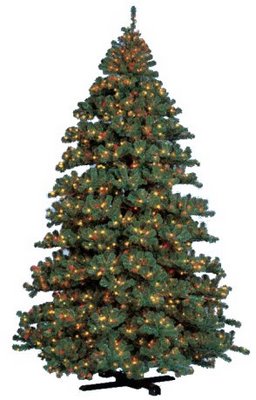
WELCOME TO THE CHRISTMAS EDITION OF GETTING TO KNOW YOUR FRIENDS.
CHANGE ALL THE ANSWERS SO THAT THEY APPLY TO YOU.
1. Eggnog or Hot Chocolate? Hot Chocolate
2. Does Santa wrap presents or just set them under the tree? Wrap them of course!!
3. Colored lights on tree/house or white? Colored for sure. White is pretty as well, but I prefer colored
4. Do you hang mistletoe? I love mistle toe but I can't seem to find any this year, if anyone can please let me know?
5. When do you put your decorations up? It really all depends
6. What is your favorite holiday dish? Roast Beef with yorkshire pudding....mmmmm
7. Favorite holiday memory as a child? Christmas Eve and all the anticipation of opening presents and the family all together
8. When and how did you learn the truth about Santa? I remember some kid in school telling me and I didn't want to believe it
9. Do you open a gift on Christmas Eve? Yes .
10. What kind of cookies does Santa get set out for him? Whatever kind we make that year. I love to make peppermint cany cane cookies
11. Snow! Love it or hate it? Love it as long as the roads are clear for traveling
12. Can you ice skate? At one point I was good...but now??????
13. Do you remember your favorite gift? My children, and then after this the first puppy I got at 7 yrs old
14. What's the most important thing about the holidays to you? That a Savior came into this world to free us from sin.
Being with my Family and Friends
15. What is your favorite holiday dessert? Christmas Cookies
16. Favorite Holiday tradition? Baking and decorating
17. What tops your tree? An angel
18. Which do you prefer--GIVING OR RECEIVING? Giving , but receiving is always very cool!
19. What is your favorite Christmas Carol? O Holy Night and The Nutcracker, Do You Hear What I hear? and so many other great classics, too many to mention
20. Candy Canes? Love them!
Consider Yourself tagged!!


|
|


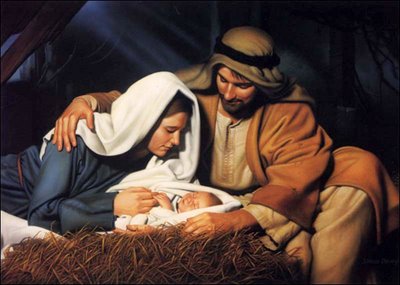
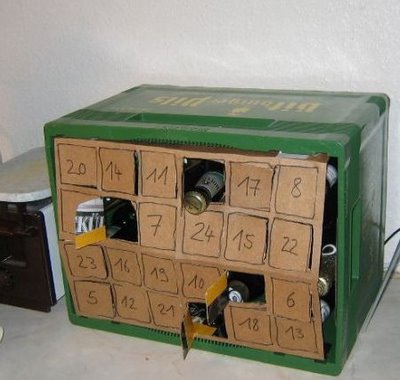














 Official Mascot of The League of Warm & Fuzzy Traditionalists
Official Mascot of The League of Warm & Fuzzy Traditionalists




